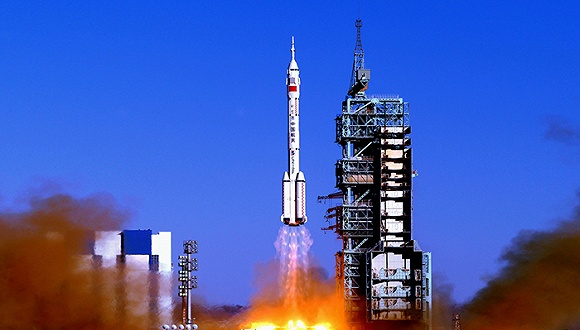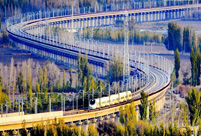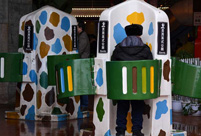

 |
| (File Photo) |
Why will the manned spaceship Shenzhou-11 carry just two astronauts into space? Zhang Bonan, chief designer of the manned spacecraft system of the China Aerospace Science and Technology Group replied to the question from a reporter for Science and Technology Daily, saying that they are limited by the capacity of the life support system, so the number of the astronauts has to be reduced in order to extend the duration of the astronauts’ time in space.
As part of the country's space lab program, China plans to launch the Shenzhou-11 spacecraft in the fourth quarter of this year, putting it on course to dock with Tiangong-2, according to the program's spokesperson.
The plan has aroused some speculation from foreign experts and media. Australian space expert Morris Jones published an article pointing out that recent Chinese manned space missions have carried three astronauts into space each time. Since the Shenzhou-11 spacecraft is larger than the Russian Soyuz spacecraft and can easily hold three astronauts, Jones asked why China would reduce the number of passengers for the Shenzhou-11 space mission.
Zhang said that one of the main purposes of the Shenzhou-11 mission is to carry out a middle-length residence experiment. The residence time has thus been deliberately prolonged.
Previously, China’s longest stay in space was carried out by the astronauts of Shenzhou-10. That mission lasted 15 days. According to the plan for Shenzhou-11, the astronauts will complete a 30-day residence in orbit. But Zhang said the plan has not yet been finalized.
A few days ago, U.S. and Russian astronauts ended a year's stay in space, returning to earth from the International Space Station. Zhang said China's space laboratory doesn't have a renewable life support system. Compared to the Tiangong-1, the support capabilities of Tiangong-2 are not vastly improved. There is still a big gap compared with the conditions of the International Space Station.
"China’s future space station will also adopt a renewable life support system," Zhang added.
 China has world's largest high-speed rail network
China has world's largest high-speed rail network Top beauties in Chinese provinces
Top beauties in Chinese provinces 600 people attend Lusheng playing contest in S China
600 people attend Lusheng playing contest in S China Engineer troop builds bridge in real combat conditions
Engineer troop builds bridge in real combat conditions You can urinate in public in Chongqing
You can urinate in public in Chongqing Rice terrace scenery in southwest China's Yunnan
Rice terrace scenery in southwest China's Yunnan 2016 Miss Chinatown USA pageant held in San Francisco
2016 Miss Chinatown USA pageant held in San Francisco Ancient pagodas across China
Ancient pagodas across China Wedding dress show up in the air
Wedding dress show up in the air Top 20 hottest women in the world in 2014
Top 20 hottest women in the world in 2014 Top 10 hardest languages to learn
Top 10 hardest languages to learn 10 Chinese female stars with most beautiful faces
10 Chinese female stars with most beautiful faces China’s Top 10 Unique Bridges, Highways and Roads
China’s Top 10 Unique Bridges, Highways and Roads Reform pain offset by growing economy
Reform pain offset by growing economy ZTE operating normally; complies with law
ZTE operating normally; complies with law By the Numbers: Government work report
By the Numbers: Government work report Female deputies give women's perspective at two sessions
Female deputies give women's perspective at two sessionsDay|Week